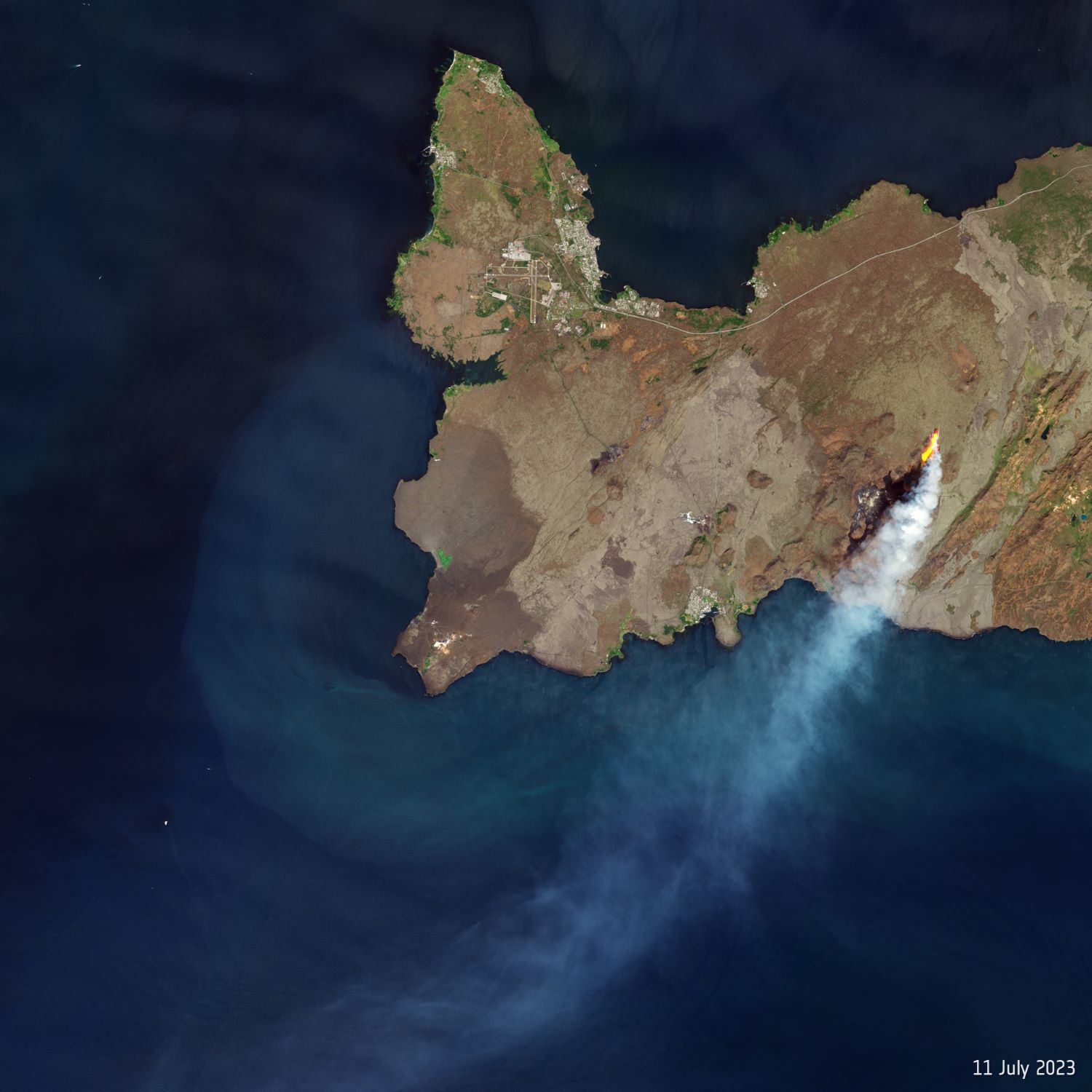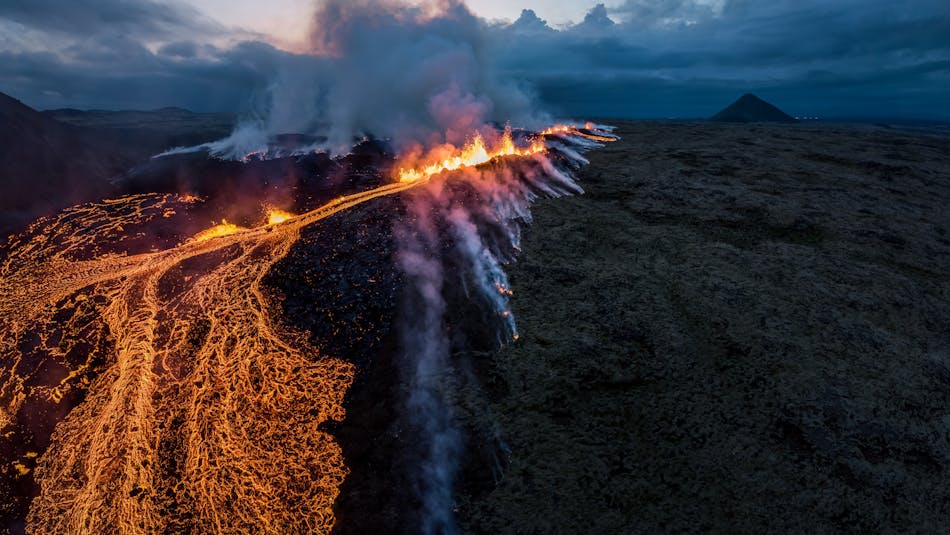ESA’s Sentinel-2 satellite captured Fagradalsfjall, Iceland. On July 10, 2023, a fissure eruption started on the Reykjanes Peninsula northwest of the sites of the 2021 and 2022 eruptions in Fagradalsfjall. The new eruption site is about 38km from Reykjavík.

Fagradalsfjall is a tuya volcano formed in the Last Glacial Period on the Reykjanes Peninsula, around 40km from Reykjavík, Iceland. No volcanic eruption had occurred for 815 years on the Reykjanes Peninsula until March 19, 2021 when a fissure vent appeared in Geldingadalir to the south of Fagradalsfjall mountain. The 2021 eruption was effusive and last emitted fresh lava on 18 September 2021. The eruption was unique among the volcanoes monitored in Iceland so far and is expected to develop into a shield volcano. Due to its relative ease of access from Reykjavík, the volcano has become an attraction for local people and foreign tourists.
The local scenery on the ground is as follows.

Reference: ESA Earth Observation’s Tweet
See earthview photo gallery: LiVEARTH